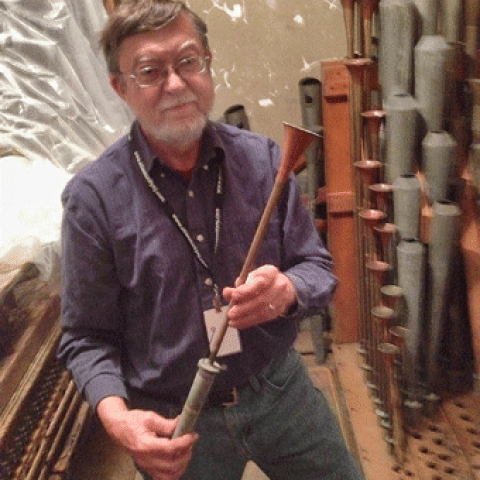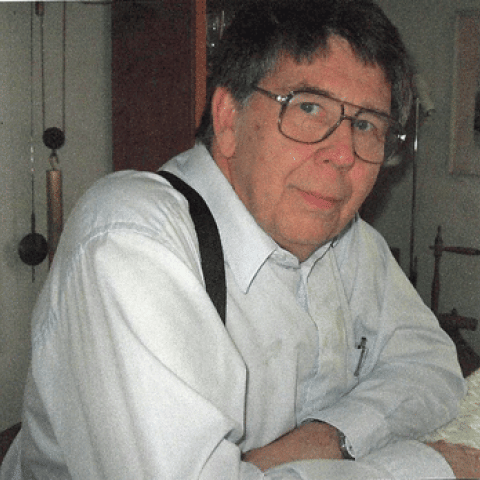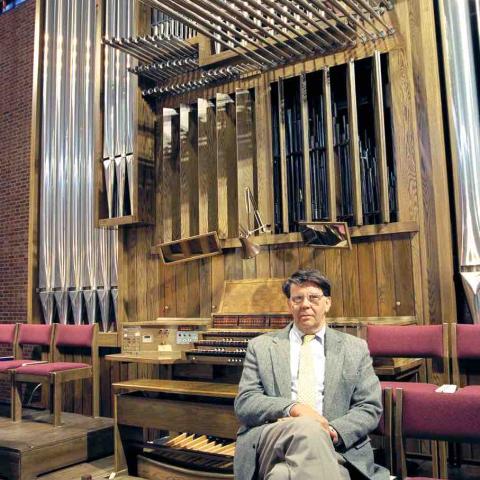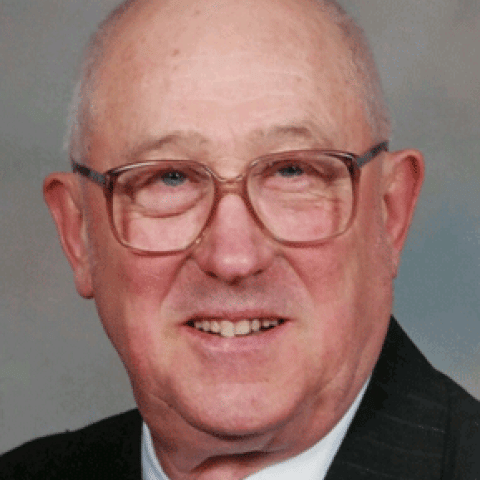
Raymond James Brunner, 71, organbuilder and organ historian, died November 17, 2020, in East Petersburg, Pennsylvania. Born June 19, 1949, in Lancaster, Pennsylvania, he was the author of a comprehensive study of 18th- and 19th-century Pennsylvania German organbuilders and their instruments, That Ingenious Business, published in 1990 by the Pennsylvania German Society. He was a member of the Organ Historical Society and the American Institute of Organbuilders.
In February 1981, Mr. Brunner founded the organbuilding firm Brunner & Heller in Marietta, Pennsylvania, with Alan E. Heller (1952–2008), becoming sole proprietor of R. J. Brunner & Co. of Silver Spring, Pennsylvania, in October 1984. Both had worked as organbuilders at James R. McFarland & Co., Millersville, Pennsylvania. The Brunner firm reorganized in 2016 as Brunner & Associates, LLC, with partners Hans Herr and Thomas Becker.
Organ restorations performed by Brunner and his firm include the organ built in 1770 by David Tannenberg at Zion Moselem Lutheran Church, Kutztown, Pennsylvania, and partial restoration of the 1804 Tannenberg at the York County Historical Society, York, Pennsylvania. Other restorations and restorative repairs include 18th- and 19th-century organs built by Krauss, Doll, Jardine, Felgemaker, E. W. Lane, Bohler, Pilcher, M. P. Möller, Hook & Hastings, Hall & Labagh, and others. As well, the firm has restored and rebuilt organs of later periods and actions and built new organs of mechanical and electro-pneumatic actions.
A 1971 graduate of Lehigh University, Bethlehem, Pennsylvania, with a degree in civil engineering, Brunner worked eight years with the Pennsylvania Department of Transportation in the Research and Development Department, becoming licensed as a professional engineer. He then switched careers to pursue organbuilding and his lifelong interests in precision woodworking and cabinetmaking, antiques, and Pennsylvania German history and culture. He was largely influenced by his grandmother, the late Hattie Klapp Brunner (1889–1982), who was a well-known researcher and dealer in Pennsylvania German antiques, becoming a celebrated folk-art painter at age 67 with her grandson’s encouragement.
Brunner attended Holy Spirit Lutheran Church for 35 years. He enjoyed classic cars, trains, and was a member of the Studebaker Drivers Club of America and the Studebaker Drivers Club-Keystone Region. Other pastimes included reading, especially early American history and genealogy, as well as world travel with his wife, Martha, and boating, camping, and swimming with his family on his family’s island in the Susquehanna River.
Raymond Brunner is survived by his wife, Martha Sweigart Brunner, and by his children with his first wife, organbuilder Ruth E. Rissmiller Brunner (1958–2003): Owen J. Brunner (Jaimie) of Bel Air, Maryland; Amy E. Moore (Jeffrey) of Columbia, Pennsylvania; and Amelia R. Brunner (fiancée of Nicholas), Rochester, New York. A public memorial service will be planned for a later date.
Charles George Hendrickson, 85, died in St. Peter, Minnesota, December 17, 2020. Born June 10, 1935, in Willmar, Minnesota, he graduated from Willmar High School in 1953, Gustavus Adolphus College, St. Peter, Minnesota, in 1957, and University of Arkansas-Fayetteville in 1963 with a master’s degree in physics after building his own furnace from salvage parts based on his calculations to grow a single crystal of aluminum. He had started his graduate studies at the University of Minnesota, but then taught physics at the University of Wisconsin-Superior. While there, his interest in astronomy led him to restore the telescope tracking in their observatory to operating condition. He also built his own six-inch reflecting telescope, grinding and silvering the mirrors himself. After graduate school at the University of Arkansas, he also taught at Union University, Jackson, Tennessee, and Northeast State University, Tahlequah, Oklahoma.
After meeting his future wife Birgitta Gillberg, he taught physics at Mankato State College, now Mankato State University, Mankato, Minnesota. They were married in Sweden in 1964. That same year he was approached by family friend Rev. Lambert Engwall to build a pipe organ for First Lutheran Church, Winthrop, Minnesota. Having been his passion since helping with the installation of the organ at his home church during high school, this was the start of the business he would lead until his retirement. Hendrickson Organ Co. began in the Hendrickson garage in St. Peter and soon moved to a new building on the north end of town. His sons, Eric and Andreas, eventually succeeded him in the business.
Charles’s wife, Birgitta, died in 2018. Charles George Hendrickson is survived by his sons Eric and Andreas (Eva) Hendrickson, along with grandchildren Roy and Vivian.
See the article, “Charles Hendrickson: Profile of a Minnesota Organbuilder,” by David Fienen, in the June 2017 issue of The Diapason (pages 20–22).
Michael Jarvis of Victoria, British Columbia, Canada, 62, died December 25, 2020. A harpsichordist, chamber organist, and fortepianist, he also served as a soloist, arranger, and choir director. Born in Quebec, he worked in Nova Scotia and Ontario, focusing on rarely heard early chamber music repertoire.
Jarvis taught at University of British Columbia, University of Toronto, and Wilfred Laurier University, Waterloo, Ontario, among other institutions, before moving to Victoria five years ago with his wife, Carolyn Sinclair. He continued to perform in ensembles and choirs in recent years around British Columbia, Alberta, Washington State, and Oregon.
Jarvis was a regular performer at Victoria’s Pacific Baroque Festival and often arranged concerts on his own with Paul Luchkow, his most frequent collaborator, at Christ Church Cathedral. Jarvis was also artistic director of Bach on the Rock Music Society, the umbrella organization for Salt Spring Chamber Choir and Salt Spring Chamber Orchestra, and music director for St. Barnabas Anglican Church, Victoria.
Luchkow and Jarvis performed together as a duo and with British viola da gambist Sam Stadlen in LSJ Trio, which released its debut CD last year. Only three of the five albums Luchkow and Jarvis recorded together have been released thus far.






